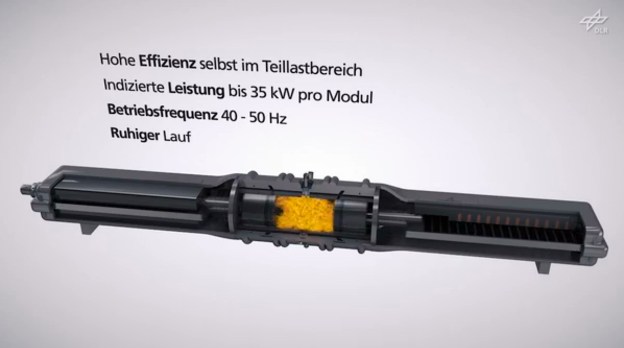
The Germans never cease to amaze us.
A group of scientists at the German Aerospace Center (DLR) have developed what they called the “free-piston linear generator” or, in German, the “Freikolbenlineargenerator.”
In distinctly German form, the name is an entire sentence squished into a single word and not a satirical joke as we had hoped. The ingenious electricity generator is small, lightweight, and ideal for a range-extending application in an electric vehicle – and who knows what else.

Comprised of two pistons inside a single cylinder facing one another, the pistons are fired simultaneously; the kinetic energy of the combustion is used to generate electricity. The opposing boxer-type movement of the pistons also means the engine offsets much of its own vibration for smooth operation.
- More tech details and a concept video (in German) are here
In place of a traditional crankshaft and connecting rod, there is a gas spring behind each piston. This gas spring can be used to adjust the compression ratio on the fly. The ratio and combustion chamber size can be adjusted so minutely as to accommodate movements down to one tenth of a millimeter. This allows the piston-free generator to run anything from gasoline to diesel to natural gas to hydrogen.

This sort of flexible electricity generation makes the free-piston generator perfect for electric cars that require a range-extending onboard generator. The Chevrolet Volt, for example, has a 1.4-liter inline four-cylinder gasoline generator that fires up after the initial 38-mile all-electric range is depleted.
Right now the free-piston generator only exists on a bench in Germany but we wouldn’t be at all surprised if some big-name automaker jumps all over this technology as it could be a small, lightweight solution to many EV problems.
We’ve always joked that the Germans were magic. With the unveiling of this “free-piston” generator, we now know they are.


